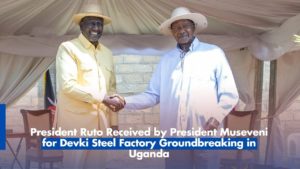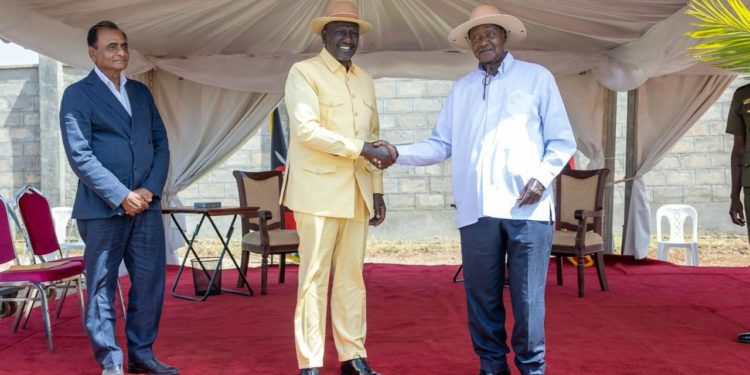On 21 November 2025, Presidents William Ruto and Yoweri Museveni attended a groundbreaking ceremony at the Devki Mega Steel Project site in Tororo, Uganda. The event marked the launch of East Africa’s largest integrated steel mill. Moreover, it reaffirmed ties between the two countries in the strongest terms yet.
President Ruto delivered a powerful message to sustained applause: “Kenya and Uganda are sister nations that must not, cannot and will not fight.” President Museveni immediately echoed the sentiment. Furthermore, he described his Kenyan counterpart as having been “arranged by God” for the role. He noted that past doubters had been proved wrong.

Key Commitments Made at the Event
Both leaders personally pledged to extend the Standard Gauge Railway (SGR) from Naivasha through Malaba to Kampala. Additionally, they committed to removing remaining non-tariff barriers under direct presidential oversight.
In a historic first, Uganda announced its investment in the Kenya Pipeline Company (KPC). The presidents also reaffirmed joint cooperation on energy, trade, and transport with clear timelines.
Why the Tororo Event Transforms Regional Relations
The $300 million+ steel plant sits just kilometres from the border. Consequently, it will process Kenyan raw materials—iron ore, limestone, and electricity—in Uganda. Finished steel products will then flow duty-free in both directions. The project will create thousands of jobs in Tororo, Malaba, Jinja, Eldoret, and beyond.
The leaders chose the location deliberately. Tororo symbolises the shared future of the Northern Corridor. When completed, the SGR extension will slash transit times between Mombasa port and Kampala. As a result, logistics costs will drop dramatically and regional competitiveness will strengthen significantly.
Broader Regional Implications
Days earlier, tensions had escalated over comments on ocean access. However, observers now interpret the Tororo ceremony as the decisive counter-message. Cooperation, not confrontation, takes priority at the highest level.
Across the East African Community, stakeholders welcome the event as evidence that political will finally aligns with long-standing integration goals. Business confidence along the corridor has risen sharply. Meanwhile, logistics firms, manufacturers, and real estate developers reposition themselves for the expected boom.
The Road Ahead
Concrete projects now define Kenya–Uganda relations. Steel mills, railways, pipelines, and reciprocal investments have replaced rhetoric with action. Shovels hit the ground instead of words filling the air.
For the first time in years, the border serves as a bridge rather than a barrier. This partnership promises to reshape East African trade and cooperation for decades to come.


















